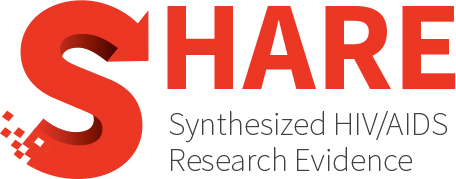Cost-effectiveness of pre-exposure prophylaxis among men who have sex with men in China: A systematic review
Abstract
OBJECTIVE: Men who have sex with men in China meet the definition of the population at “substantial risk” of contracting human immunodeficiency virus (HIV) according to the World Health Organization; therefore, initiating pre-exposure prophylaxis (PrEP) is recommended for this population. Lack of convincing evidence on cost-effectiveness has resulted in the lack of large-scale PrEP implementation at a national level. The objective of this review is to assess the cost-effectiveness of pre-exposure prophylaxis implementation among men who have sex with men in China. METHODS: The following databases were used to search studies of pre-exposure prophylaxis in China in both English and Chinese: PubMed, Embase, the China National Knowledge Infrastructure (CNKI), and the Wanfang Database. Inclusion criteria included pre-exposure intervention, year for publication (2007–2021), setting (China), and cost-effectiveness estimation. RESULTS: Seven studies were identified. We found that pre-exposure prophylaxis is only cost-effective among men who have sex with men without prioritization with at least a 5.5% reduction in the market price in the models. Pre-exposure prophylaxis is potentially cost-effective when using the latest market price, combined with other preventive programs or delivered to the population with a high risk of HIV exposure. CONCLUSION: Our study identifies key considerations in cost-effectiveness evaluation: cost assumptions, implementation coverage, and targeted population. The scarce evidence available is not comparable to some extent. However, combined with the latest market and policy reform, the cost-effectiveness of PrEP could be achieved as estimated by the underlying model of the included studies. Consequently, it calls for more standard and transparent modeling studies that include the latest drug types and market prices.
Authors
Mi Y, Zeng Y, Wang P, Zhou M, Cheng F
Year
2022
Topics
- Population(s)
- Men who have sex with men
- General HIV- population
- Prevention, Engagement and Care Cascade
- Prevention
- Prevention
- Biomedical interventions
- Health Systems
- Financial arrangements
